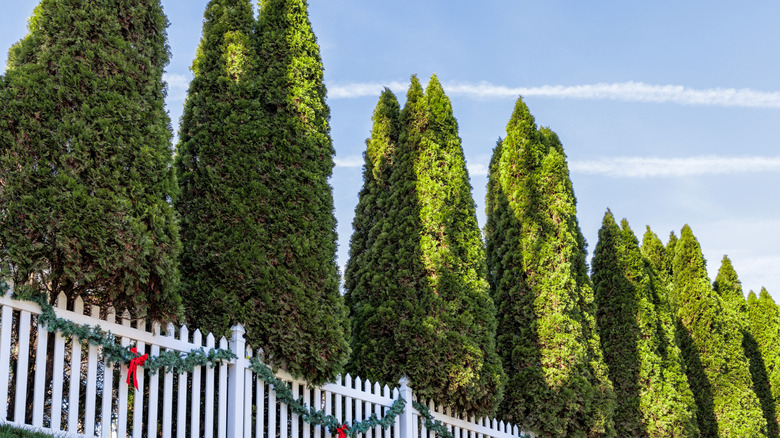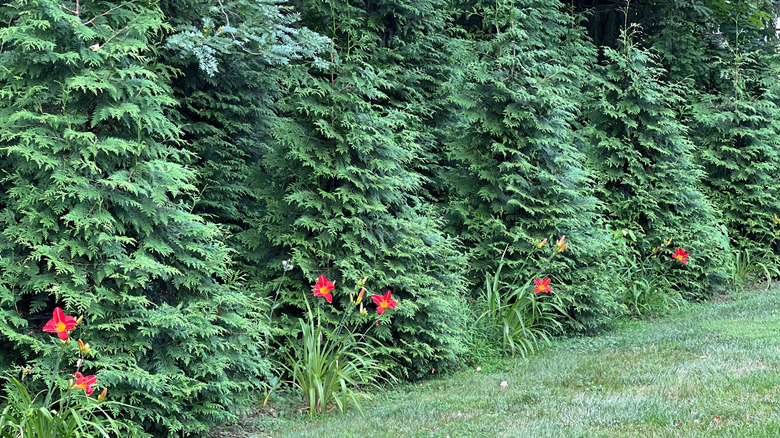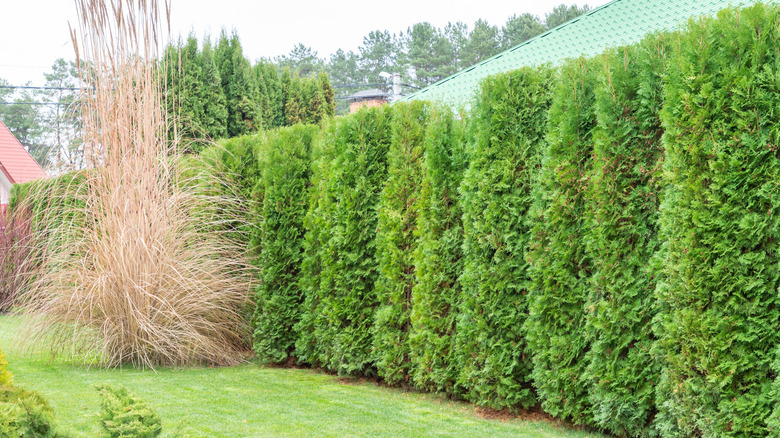Choosing Between Green Giant And Emerald Green Arborvitae Trees For Home Privacy
When it comes to natural privacy solutions, two popular options stand out: the 'Green Giant' (Thuja standishii x plicata 'Green Giant') and its more compact cousin, emerald green (Thuja occidentalis 'Smaragd'). Both varieties are evergreen and valued for their dense foliage, which adds year-round interest; however, each meets a different need. The best one for you may depend on your property's size, climate, and how you want your yard to look.
'Green Giant' trees are a fast-growing solution for backyard privacy, growing as much as 4 feet per year in suitable conditions. Once mature, these trees can reach an impressive 60 feet in height and 20 feet in width. These qualities make them ideal for homeowners who need lots of coverage, fast.
Emerald green arborvitae, on the other hard, is a standout plant to consider for adding privacy to a small yard, or if you desire a more elegant privacy hedge. Unlike the towering 'Green Giant', emerald green only grows up to 12 inches each year after reaching maturity, reaching a height of 15 feet and a width of 4 feet. So, which is the better home privacy option for your home? The answer depends on the individual factors we explore below.
The 'Green Giant' is a better fit for large properties
The rapid growth and impressive size of the 'Green Giant' creates an expansive privacy barrier that's perfect for wide-open spaces. This fast-growing privacy tree is an ideal complement for homes with large, open yards, where privacy and a sense of enclosure are key. You can improve the effectiveness of a 'Green Giant' barrier even more through proper planting. 'Green Giant' trees planted farther apart can spread out and grow into a natural curtain, so you want to keep about 6 feet between the trees when planting them.
The size of a 'Green Giant,' however, can be a problem in smaller spaces. Without enough room in the yard, these trees can take over the area or need regular pruning in order to stay in good order. But if you have space to grow these trees, they provide a lush, rapid-growing privacy solution that's tough to beat.
The 'Green Giant' is a low-maintenance option once established, as it is highly resistant to pests and diseases. Hardy in USDA zones 5 through 8, 'Green Giant' tolerates many types of soil as long as it's somewhat loose and drains well. It is drought-tolerant once established, but prefers consistent watering during the first few years of establishment.
Why emerald green may be the better option
Emerald green arborvitae makes a great choice if you are looking for a tight, sleek privacy screen, which is a desirable trait for smaller yards or suburban environments. Emerald green is also low maintenance, which makes it appealing to a lot of homeowners who prefer to keep things easy. The tree's slower growing rate means that it requires less pruning to keep looking tidy. If you're looking to build a seamless, groomed hedge, space the trees 2 to 3 feet apart for dense privacy coverage without overcrowding.
Growing in USDA zones 2 to 7, this tree is a good option for colder climates, tolerating harsh winters better than many other varieties. Emerald green will thrive with four to six hours of sunlight daily, although it will also grow in partial shade. It likes well-draining, moderately fertile soil with a slightly acidic or neutral pH. Emerald green demands regular watering for the first few years until its roots are fully established, but when mature, it's somewhat drought tolerant. In spring, you can add a balanced, slow-release fertilizer to increase the tree's health and vibrancy. However, this emerald green may be more vulnerable risk to pests such as bagworms, so you'll have to monitor it periodically.


